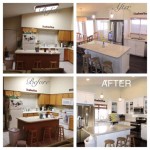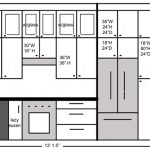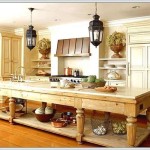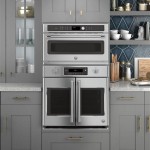Tile vs. Wood: Choosing the Right Kitchen Flooring
Selecting the appropriate flooring for a kitchen is a crucial design decision that significantly impacts both the aesthetic appeal and functionality of the space. Tile and wood are two of the most popular choices, each offering distinct advantages and disadvantages. This article will explore the characteristics of both materials, providing information to assist homeowners in making an informed decision based on their individual needs and preferences.
The kitchen presents unique challenges for flooring due to its high traffic, potential for spills, and fluctuations in temperature and humidity. The chosen material must be durable, easy to clean, and resistant to damage from water, stains, and impacts. Furthermore, the flooring should complement the overall design of the kitchen, contributing to a cohesive and visually pleasing environment.
Durability and Maintenance Considerations
Durability is a paramount concern for kitchen flooring. Tile, particularly ceramic and porcelain, is renowned for its exceptional durability. These materials are resistant to scratches, dents, and fading, making them suitable for high-traffic areas. Properly installed tile can last for decades with minimal maintenance. Cleaning typically involves sweeping or vacuuming to remove loose debris, followed by mopping with a mild detergent solution.
Wood flooring, while aesthetically appealing, is generally more susceptible to damage than tile. Hardwood species like oak, maple, and hickory offer better durability than softer woods like pine. Engineered wood, consisting of a thin layer of hardwood bonded to a plywood core, provides enhanced stability and resistance to moisture compared to solid hardwood. However, wood flooring is still vulnerable to scratches, dents, and water damage. Regular maintenance includes sweeping, vacuuming, and occasional refinishing to restore the finish and remove imperfections. Spills should be cleaned immediately to prevent staining and warping.
The grout lines between tiles can be a source of maintenance challenges. Grout is porous and can absorb stains and dirt over time. Regular cleaning with a grout brush and specialized grout cleaner is necessary to maintain a clean and uniform appearance. Sealing grout lines can help to prevent staining and make cleaning easier.
Aesthetic Versatility and Design Integration
Both tile and wood offer a wide range of aesthetic options, allowing homeowners to achieve virtually any desired look in their kitchen. Tile is available in a vast array of colors, patterns, sizes, and textures. Options range from classic subway tiles to large-format porcelain slabs that mimic natural stone. Digital printing technology allows for the creation of tiles that closely resemble wood, concrete, or other materials. The versatility of tile makes it suitable for both modern and traditional kitchen designs.
Wood flooring provides a natural warmth and beauty that is difficult to replicate with other materials. The grain patterns and color variations inherent in wood create a unique and inviting atmosphere. Different wood species offer distinct aesthetic characteristics, from the light and airy tones of maple to the rich and warm hues of cherry. Wood flooring can be stained or finished to complement any color palette. The timeless appeal of wood makes it a popular choice for kitchens seeking a classic or rustic aesthetic.
The choice between tile and wood can also depend on the overall design concept of the home. In open-concept layouts, using the same flooring material throughout the kitchen and adjacent living areas can create a sense of visual continuity. Wood flooring can seamlessly transition from the kitchen to the living room, while tile may require a transition strip or a different flooring material to define the spaces. The selection should consider the desired flow and cohesiveness of the interior design.
Cost Considerations and Installation Requirements
The cost of tile and wood flooring varies depending on the material quality, size, and installation complexity. Tile typically ranges in price from a few dollars per square foot for basic ceramic tiles to over twenty dollars per square foot for high-end porcelain or natural stone tiles. Wood flooring prices similarly vary based on the species, grade, and construction. Engineered wood is often more affordable than solid hardwood. The cost of installation can also significantly impact the overall project budget. Tile installation requires skilled labor to ensure proper leveling, cutting, and grouting.
Wood flooring installation methods vary depending on the type of wood. Solid hardwood is typically nailed or glued to a subfloor, while engineered wood can be floated, glued, or nailed. Proper acclimation of the wood to the kitchen environment is crucial to prevent warping or cracking. The installation process can be time-consuming and requires precision to achieve a seamless and professional result.
Beyond the initial purchase and installation costs, long-term maintenance expenses should be considered. While tile requires less frequent refinishing than wood, grout cleaning and sealing can add to the ongoing maintenance budget. Wood flooring may require periodic refinishing to maintain its appearance and protect it from damage. The lifespan of the flooring material and its resistance to wear and tear will ultimately influence the total cost of ownership.
The presence of radiant floor heating is another factor to consider. Both tile and wood can be installed over radiant heating systems, but certain precautions must be taken. Tile is an excellent conductor of heat and is well-suited for use with radiant heating. Wood flooring, however, can be more sensitive to temperature fluctuations. Engineered wood is generally preferred over solid hardwood for radiant heating applications because of its increased stability. Adhering to manufacturer recommendations for installation and temperature control is crucial to prevent damage to the wood flooring.
The subfloor condition is also a critical consideration. Both tile and wood flooring require a level and stable subfloor for proper installation. Uneven or damaged subfloors must be repaired or replaced before installing the new flooring. This can add to the overall project cost and timeline. A thorough inspection of the subfloor is recommended to identify any potential issues before beginning the installation process.

Hardwood Vs Tile Kitchen Flooring A Comprehensive Comparison Ranney Blair Weidmann

What Looks As Good And Wears Better Than Wood Floors Tiles The Denver Post

Kitchen Tile Flooring Why Wood Look Is Trending Daltile

Kitchen With Wooden Tile Backsplash Contemporary Denver By Green Line Architects Houzz

Tile Vs Hardwood Floors In The Kitchen Calypso Country

13 Ideas For Upgrading Your Kitchen Floors Extra Space Storage

Hardwood Vs Tile Kitchen Flooring A Comprehensive Comparison Ranney Blair Weidmann

Top 10 Wood Effect Tiles Stylish Designs Walls And Floors

Kitchen Tile Ideas With Wooden Cabinets 14 Clever Combinations

Wood Look Porcelain Tile For Kitchen Entry Den Possibilities Are Endless Fusion New York By Old Country Ceramic Houzz








